Count Basie: the 100 most inspiring musicians of all time
American jazz musician William Basie, (b. Aug. 21, 1904, Red Bank, N.J., U.S.—d. April 26, 1984, Hollywood, Fla.) popularly known as “Count,” was noted for his spare, economical piano style and for his leadership of influential and widely heralded big bands.
Basie studied music with his mother and was later influenced by the Harlem pianists James P. Johnson and Fats Waller, receiving informal tutelage on the organ from the latter. He began his professional career as an accompanist on the vaudeville circuit. Stranded in Kansas City,
Mo., in 1927, Basie remained there and in 1935 assumed the leadership of a nine-piece band composed of former members of the Walter Page and Bennie Moten orchestras.
One night, while the band was broadcasting on a shortwave radio station in Kansas City, he was dubbed “Count” Basie by a radio announcer who wanted to indicate his standing in a class with aristocrats of jazz such as
Duke Ellington. Jazz critic and record producer John Hammond heard the broadcasts and promptly launched the band on its career. Though rooted in the riff style of the 1930s swing-era big bands, the Basie orchestra played
with the forceful drive and carefree swing of a small combo.
They were considered a model for ensemble rhythmic conception and tonal balance—this despite the fact that most of Basie’s sidemen in the 1930s were poor sight readers; mostly, the band relied on “head” arrangements (so called because the band had collectively composed and memorized them, rather than using sheet music).
The early Basie band was also noted for its legendary soloists and outstanding rhythm section. It featured such jazzmen as tenor saxophonists Lester Young and Herschel Evans, trumpeters Buck Clayton and Harry “Sweets” Edison, and trombonists Benny Morton and Dicky Wells. The legendary Billie Holiday was a vocalist with Basie for a short stint (1937–38), although she was unable to record with the band because of her contract with another record label; mostly, vocals were handled by Jimmy Rushing. The rhythm unit for the band—pianist Basie, guitarist Freddie Green (who joined the Basie band in 1937 and stayed for 50
years), bassist Walter Page, and drummer Jo Jones—was unique in its lightness, precision, and relaxation, becoming the precursor for modern jazz accompanying styles.
Basie began his career as a stride pianist, reflecting the influence of Johnson and Waller, but the style most strongly associated with him was characterized by spareness and precision. Whereas other pianists were noted for technical flash and dazzling dexterity, Basie was known for his use of silence and for reducing his solo passages to the minimum amount of notes required for maximum emotional and rhythmic effect.

The Basie orchestra had several hit recordings during the late 1930s and early ’40s, among them “Jumpin’ at the Woodside,” “Every Tub,” “Lester Leaps In,” “Super Chief,” “Taxi War Dance,” “Miss Thing,” “Shorty George,” and “One O’Clock Jump,” the band’s biggest hit and theme song. It had continued success throughout the war years, but, like all big bands, it had declined in popularity by the end of the 1940s.
During 1950 and ’51, economy forced Basie to front an octet, the only period in his career in which he did not lead a big band. In 1952 increased demand for personal appearances allowed Basie to form a new orchestra that in many ways was as highly praised as his bands of the 1930s and ’40s. (Fans distinguish the two major eras in Basie bands as the “Old Testament” and “New Testament.”)
Browse in the Library:
| Artist or Composer / Score name | Cover | List of Contents |
|---|---|---|
| A dozen A Day Book 1 Technical exercises for the piano |
 |
A dozen A Day Book 1 Technical exercises for the piano |
| A dozen A Day Book 2 Technical exercises for the piano |
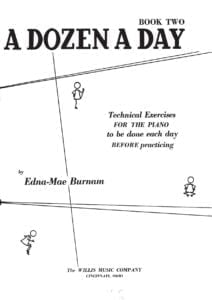 |
|
| A dozen A Day Book 3 Technical exercises for the piano |
 |
|
| A dozen A Day Book 4 Technical exercises for the piano |
 |
|
| A dozen A Day Mini Book Technical exercises for the piano |
 |
|
| A dozen Day Preparatory Book Technical exercises for the piano |
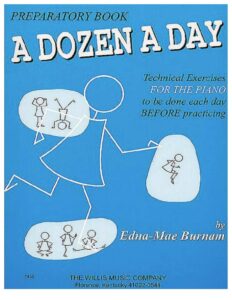 |
|
| A Farewell To Arms Love Theme From A Farewell To Arms film by Mario Nascimbene Francis Webster 1957 |
 |
|
| A Felicidade (Antonio Carlos Jobim) | ||
| A Festival Gathering Of Carols (Musescore File).mscz | ||
| A Fine Frenzy – Almost Lover |
 |
|
| A Fistful of Dollars (Ennio Morricone) | ||
| A Generative Theory Of Tonal Music by Fred Lerdahl and Ray Jackendoff (Book) |
 |
|
| A Guide To Guitar Chords by Curt Sheller |
 |
A Guide To Guitar Chords by Curt Sheller |
| A Guide To Musical Analysis by Nicholas Cook (Book) |
 |
|
| A Handbook Of Piano Playing (By Eric Hope) (1962) |
 |
|
| A Heart Full Of Love (Musescore File).mscz | ||
| A love suicide (Yutaka Minobe) | ||
| A Love Supreme (by Ashley Kahn) The story of john Coltrane’s signature album (Book) |
 |
|
| A Media Luz (Edgardo Donato) | ||
| A Modern Approach To Jazz Rock And Fusion For Guitar with Tablature |
 |
A Modern Approach To Jazz Rock And Fusion For Guitar |
| A Modern Method For Guitar (Berklee) 1 by William Leavitt |
 |
A Modern Method Berklee 1 |
| A Modern Method For Guitar (Berklee) 2 by William Leavitt |
 |
A Modern Method For Guitar (Berklee) 2 |
| A Modern Method For Guitar (Berklee) 3 by William Leavitt |
 |
A Modern Method For Guitar (Berklee) 3 |
| A MOZART REINCARNATED (Ennio Morricone) |
 |
|
| A Mozart Reincarnated by Ennio Morricone (Musescore File).mscz | ||
| A New Approach To Ear Training by Leo Kraft (BOOK) |
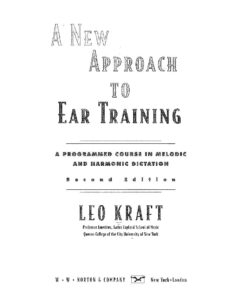 |
|
| A New Approach To Piano Technique (By Ruth A. Dickerson) (1962) |
 |
A new approach to piano technique |
| A Night In Tunisia – Dizzy Gillespie.mscz | ||
| A Pedal Method For The Piano (By Albert F Venino) (1893) |
 |
|
| A Popular Account Of Ancient Musical Instruments And Their Development by William Lynd (Book 1897) |
 |
|
| A Rockin’ Christmas Piano Vocal Guitar |
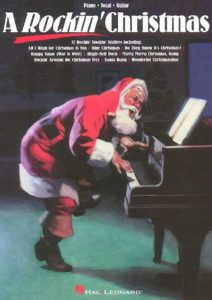 |
20 songs to sing on a rockin’ Christmas Eve Includes: All I Want for Christmas Is You * Grandma Got Run Over by a Reindeer * Happy Xmas (War Is Over) * Jingle-Bell Rock * Merry Merry Christmas Baby * Rockin’ Around the Christmas Tree * Santa Baby & moreRockin Christmas |
| A Single Man – George’s Waltz (Shigeru Umebayashi) | ||
| A Single Man – Stillness of the Mind (Abel Korzeniowski) | ||
| A Smooth Jazz Christmas – Mellow Seasonal Favorites for Piano arr. Roger House |
 |
A Smooth Jazz Christmas – Mellow Seasonal Favorites for Piano arr. Roger House |
| A Song For You – Leon Russell Ray Charles (Musescore File).mscz | ||
| A Star Is Born – Always Remember Us This Way Lady Gaga |
 |
|
| A Star Is Born – Shallow Lady Lady Gaga |
 |
|
| A Tale Of Two Sisters Ost – Epilogue Piano Solo |
 |
|
| A Thousand Years – Twilight OST (Christina Perri) | ||
| A Time For Love – Johnny Mandel |
 |
|
| A Time For Us – Guitar TABlature |
 |
|
| A Time For Us (Love Theme from Romeo and Juliet) Nino Rota |
 |
|
| A Time For Us (Romeo and Juliet OST) Nino Rota | ||
| A Touch Of Jazz 14 well-known hymns, gospel songs and contemporary praise songs by Wolaver Bill |
 |
A Touch Of Jazz 14 well-known hymns, gospel songs and contemporary praise songs by Wolaver Bill |
| A Tribute To Ella Fitzgerald Piano Vocal Guitar |
 |
A tribute to ELLA FITZGERALD |
| A Walk To Remember – Only Hope | ||
| A whiter shade of pale – Procul Harum | A whiter shade of pale – Procul Harum | |
| AaRON U-turn Lili Piano |
 |
|
| Ab Ovo – Joep Beving (Musescore File).mscz | ||
| Abba – Abba Gold – Greatest Hits |
 |
ABBA Gold Geatest Hits booksong sheet music |
| Abba – Chiquitita | ||
| Abba – Dancing Queen | ||
| Abba – Fernando | ||
| Abba – I Have A Dream | ||
| Abba – Like An Angel Passing Through My Room | ||
| Abba – Mamma Mia | ||
| Abba – Slipping Through My Fingers | ||
| Abba – Thank You For The Music | Abba-Thank-You-For-The-Music 1st page | |
| ABBA – Thank You For The Music (Piano Vocal Guitar) | ABBA – Thank You For The Music (Piano Vocal Guitar) | |
| ABBA – Thank You For the Music (Piano vocal Guitar) (Musescore File).mscz | ||
| Abba – Thank You For The Music Piano & vocal | Abba – Thank You For The Music-abba-satb | |
| Abba – The Winner Takes It All | ||
| ABBA Dancing Queen Easy Piano Solo |
 |
|
| ABBA Fernando (Piano Solo arr.) |
 |
|
| ABBA Fernando (Piano Solo arr.).mscz | ||
| ABBA Greatest Hits |
 |
ABBA GREATEST HITS SHEET MUSIC BOOK |
| ABBA I Have A Dream |
 |
|
| Abba The Very Best Vol 1 Easy Piano Hans Gunter Heumann Pop Classics For Piano |
 |
Abba The Very Best Vol 1 Easy Piano |
| Abba The Very Best Vol 2 Easy Piano Hans Gunter Heumann Pop Classics For Piano |
 |
Abba The Very Best Vol 2 Easy Piano |
| Abbey Lincoln Songbook |
 |
Abbey Lincoln Songbook |
| Abbey Lincoln Songbook Piano Vocal Guitar Chords |
 |
Abbey Lincoln Songbook Piano Vocal Guitar Chords |
| Abdullah Ibrahim – The Piano World Of |
 |
Abdullah Ibrahim, The Piano World Of |
| Abdullah Ibrahim The African Piano Of Abdullah Ibrahim Vol 1 |
 |
Abdullah Ibrahim The African Piano Of Abdullah Ibrahim Vol 1 |
| Abdullah Ibrahim The Wedding (piano solo transcription sheet music, partition) |
 |
|
| Abel Korzeniowski – Death Is My Heir (from Romeo and Juliet) |
 |
|
| ABRSM Jazz Piano Pieces Grade 1 to 5 |
 |
ABRSM Jazz Piano Pieces Grade 1 to 5 ABRSM Jazz Piano Pieces Grade 5ABRSM Jazz Piano Pieces Grade 5 |
| ABRSM Piano Exam Pieces Grade 1 (2016) |
 |
ABRSM Piano Exam Pieces Grade 1 (2016) |
| ABRSM Piano Scales, Arpeggios Grade 8 |
 |
|
| ABRSM Piano Scales, Arpeggios and broken chords Grade 1 |
 |
|
| ABRSM Piano Scales, Arpeggios and broken chords Grade 4 |
 |
ABRSM Piano Scales, Arpeggios and broken chords Grade 4 |
| ABRSM Piano Scales, Grade 2 A Guide for Students and Teachers | ABRSM Piano Scales, Grade 2 A Guide for Students and Teachers | |
| ABRSM – Time pieces for guitar vol. 1 |
 |
|
| ABRSM – Time pieces for guitar vol. 2 |
 |
|
| ABRSM 2017 18 Piano Exam Pieces Grade 1 |
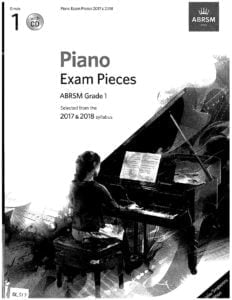 |
ABRSM 2017 18 Piano Exam Pieces Grade 1 |
| ABRSM 2017 18 Piano Exam Pieces Grade 2 |
 |
ABRSM 2017 18 Piano Exam Pieces Grade 2 |
| ABRSM 2017 18 Piano Exam Pieces Grade 3 |
 |
|
| ABRSM 2017 18 Piano Exam Pieces Grade 4 |
 |
|
| ABRSM 2017 18 Piano Exam Pieces Grade 5 |
 |
|
| ABRSM 2017 18 Piano Exam Pieces Grade 6 |
 |
|
| ABRSM 2017 18 Piano Exam Pieces Grade 7 |
 |
|
| ABRSM 2017 18 Piano Exam Pieces Grade 8 |
 |
|
| ABRSM 2021-2022 Piano Exam Pieces Grade 1 |
 |
|
| ABRSM 2021-2022 Piano Exam Pieces Grade 2 |
 |
|
| ABRSM 2021-2022 Piano Exam Pieces Grade 3 |
 |
|
| ABRSM 2021-2022 Piano Exam Pieces Grade 5 |
 |
|
| ABRSM 2021-2022 Piano Exam Pieces Grade 6 |
 |
|
| ABRSM 2021-2022 Piano Exam Pieces Grade 8 |
 |
|
| ABRSM 2021-2022 Piano Exam Pieces Initial Grade |
 |
ABRSM 2021-2022 Piano Exam Pieces Initial Grade |
| ABRSM Aural Training In Practice Book 1 Grades 1 to 3 |
 |
|
| ABRSM Aural Training In Practice Book 2 Grades 4 and 5 |
 |
|
| ABRSM Discovering Music Theory (Complete) Grades 1 to 5 Workbook by Simon Rushby (2020 Exams) |
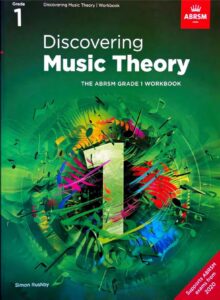 |
ABRSM Discovering Music Theory (Complete) Grades 1 to 5 Workbook by Simon Rushby (2020 Exams) contents |
| ABRSM Erster Verlust Grade 4 ABRSM Piano Exam Pieces 2021 & 2022 |
 |
|
| ABRSM Etude In A Minor – Dmitry Kabalevsky ABRSM Grade 4 Piano Exam Pieces 2021 & 2022 |
 |
|
| ABRSM Grade 2 – Inter-City Stomp byChristopher Norton From Microjazz Collection (Sheet Music) |
 |
|
| ABRSM Initial Grade Piano Exam Pieces 2023 2024 |
 |
|
| ABRSM Minuet and Trio D 41 No 21 – Franz Schubert ABRSM Grade 4 Piano Exam Pieces 2021 & 2022 |
 |
|
| ABRSM More Music Theory Sample Papers Grade 5 For New Format |
 |
|
| ABRSM Music Theory In Practice, Grade 1 (Eric Taylor) |
 |
|
| ABRSM Music Theory In Practice, Grade 2 (Eric Taylor) |
 |
|
| ABRSM Music Theory Past Papers Grade 1 2004 |
 |
|
| ABRSM Music Theory Past Papers Grade 4 2016 |
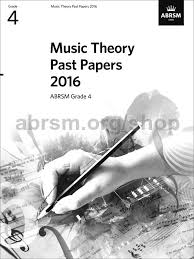 |
|
| ABRSM Music Theory Past Papers Grade 5 2012 |
 |
|
| ABRSM Music Theory Past Papers Grade 6 2013 |
 |
|
| ABRSM Nikki Iles Danny Boy ABRSM Piano Exam Grade 8 2023 Jazz Piano arr. inspired by Bill Evans |
 |
|
| ABRSM Nikki Iles Friends Book 1 Intermediate Jazz Pieces For Piano |
 |
ABRSM Nikki Iles Friends Book 1 Intermediate Jazz Pieces For Piano |
| ABRSM Nikki Iles Friends Book 2 Intermediate To Advanced Jazz Pieces For Piano |
 |
ABRSM Nikki Iles Friends Book 2 Intermediate To Advanced Jazz Pieces For Piano |
| ABRSM Nikki Iles The Elephant Parade ABRSM piano Exam |
 |
|
| ABRSM Piano 2025-2026 Grade 8 C3 A Nightingale Sang in Berkeley Square by Sherwin – Maschwitz |
 |
|
| ABRSM Piano Exam 2007-2008 Grade 3 |
 |
|
| ABRSM Piano Exam 2015-16 Grade 3 |
 |
ABRSM Piano Exam 2015-16 Grade 3 |
The Basie orchestra of the 1950s was a slick, professional unit that was expert at sight reading demanding arrangements. Outstanding soloists such as tenor saxophonists Lucky Thompson, Paul Quinichette, and Eddie “Lockjaw” Davis and trumpeters Clark Terry and Charlie Shavers, figured
prominently. Singer Joe Williams, whose authoritative, bluesinfluenced
vocals can be heard on hit recordings such as “Every Day I Have the Blues” and “Alright, Okay, You Win,” was also a major component in the band’s success. Arrangers Neal Hefti, Buster Harding, and Ernie Wilkins defined the new band’s sound on recordings such as “Li’l Darlin’,”
“The Kid from Red Bank,” “Cute,” and “April in Paris” and on celebrated albums such as The Atomic Mr. Basie (1957).
The 1950s band showcased the sound and style Basie was to employ for the remainder of his career, although there were to be occasional—and successful—experiments such as Afrique (1970), an album of African rhythms and avant-garde compositions that still managed to remain faithful to the overall Basie sound.
Throughout the 1960s, Basie’s recordings were often unremarkable, but he remained an exceptional concert performer and made fine records with singers Ella Fitzgerald, Sarah Vaughan, and Frank Sinatra. When jazz record producer Norman Granz formed his Pablo label in the 1970s, several established jazz artists, including Basie, signed on in order to record unfettered by commercial demands. Basie benefited greatly from his association with Granz and made several recordings during the ’70s that rank among his best work.
He recorded less often with his big band during this era (although when he did, the results were outstanding), concentrating instead on small-group and piano-duet recordings. Especially noteworthy were the albums featuring the duo of Basie and Oscar Peterson, with Basie’s economy and Peterson’s dexterous virtuosity proving an effective study in contrasts. Many of Basie’s albums of the ’70s were Grammy Award winners or nominees.
Suffering from diabetes and chronic arthritis during his later years, Basie continued to front his big band until a month before his death in 1984. The band itself carried on into the next century, with Thad Jones, Frank Foster, and Grover Mitchell each assuming leadership for various intervals. Basie’s autobiography, Good Morning Blues, written with Albert Murray, was published posthumously in 1985. Along with Duke Ellington, Count Basie is regarded as one of the two most important and influential bandleaders in the history of jazz.
Best site for sheet music download.
Count Basie and his Orchestra live at the North Sea Jazz Festival • 13-07-1979 • World of Jazz
The Orchestra: • Count Basie: piano • John Clayton, bass • Butch Miles, drums • Freddie Green, guitar, • Sonny Cohn, Pete Minger, Ray Brown, Paul Cohen, trumpet • Bill Hughes, Mel Wanzo, Mitchell Wood Jr, Dennis Wilson, trombone • Eric Dixon, Charlie Fowlkes, Kenny Hing, Bobby Plater, Danny Turner, saxophone • Dennis Rowland, vocals
The repertoire: Wind Machine Shiny Stockings John The III There Will Never Be Another You Good Time Blues April In Paris I Can’t Get Started In A Mellotone Easy Living 9.20 Special Good Mileage Splanky Recorded on 17 July 1979 at the Congresgebouw, The Hague, the Netherlands by AVRO TV
